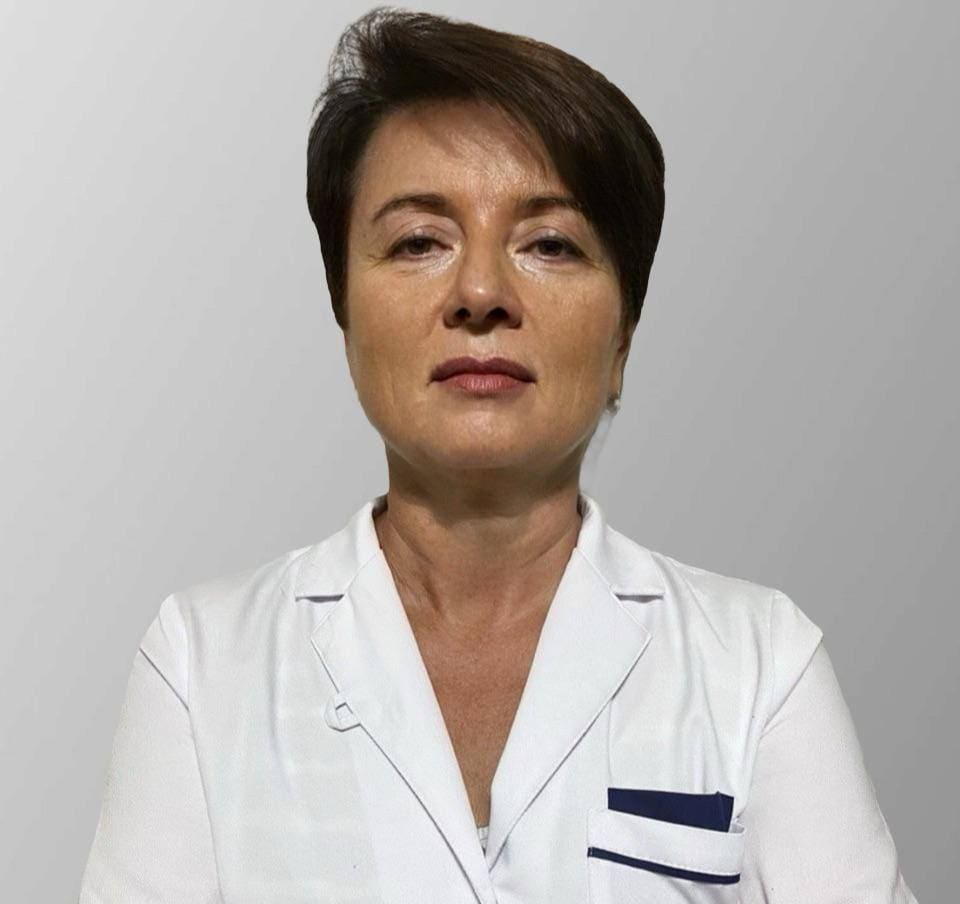

TELMISTA

Ask a doctor about a prescription for TELMISTA

How to use TELMISTA
INSTRUCTIONS for medical use of the medicinal product MYCLAV 625
Composition
active substances: amoxicillin, clavulanic acid; 1 tablet contains amoxicillin (in the form of amoxicillin trihydrate) 500 mg, clavulanic acid (in the form of potassium clavulanate) 125 mg; excipients: magnesium stearate, sodium croscarmellose (type A), colloidal anhydrous silicon dioxide, microcrystalline cellulose, sodium lauryl sulfate; coating Opadry OY-C-7000A: hypromellose, diethyl phthalate, titanium dioxide (E 171), ethylcellulose.
Pharmaceutical form
Tablets, film-coated.
Basic physico-chemical properties
White, oval, biconvex tablets, film-coated, smooth on both sides.
Pharmacotherapeutic group
Antibacterial agents for systemic use. Amoxicillin and enzyme inhibitor. ATC code J01C R02.
Pharmacological properties
Pharmacodynamics
Myclav 625 is a combination of amoxicillin, a broad-spectrum antibacterial agent, and clavulanic acid, a beta-lactamase inhibitor, which forms stable, inactive complex compounds with them and protects amoxicillin from breakdown. It acts bactericidally, inhibiting the synthesis of the bacterial wall.
Myclav 625 has a broad spectrum of antimicrobial activity.
Microorganisms listed below are classified according to their susceptibility to amoxicillin/clavulanic acid in vitro.
Susceptible microorganisms
Gram-positive aerobes: Bacillus anthracis, Enterococcus faecalis, Listeria monocytogenes, Nocardia asteroids, Streptococcus pneumoniae, Streptococcus pyogenes, Streptococcus agalactiae, Streptococcus viridans, other beta-hemolytic streptococcal species, Staphylococcus aureus (methicillin-sensitive strains), Staphylococcus saprophyticus (methicillin-sensitive strains), coagulase-negative staphylococci (methicillin-sensitive strains).
Gram-negative aerobes: Bordetella pertussis, Haemophilus influenzae, Haemophilus parainfluenzae, Helicobacter pylori, Moraxella catarrhalis, Neisseria gonorrhoeae, Pasteurella multocida, Vibrio cholerae.
Others: Borrelia burgdorferi, Leptospira ictterohaemorrhagiae, Treponema pallidum.
Gram-positive anaerobes: Clostridium species, Peptococcus niger, Peptostreptococcus magnus, Peptostreptococcus micros, Peptostreptococcus species.
Gram-negative anaerobes: Bacteroides species (including Bacteroides fragilis), Capnocytophaga species, Eikenella corrodens, Fusobacterium species, Porphyromonas species, Prevotella species.
Strains that may acquire resistance
Gram-negative aerobes: Escherichia coli, Klebsiella oxytoca, Klebsiella pneumoniae, Klebsiella species, Proteus mirabilis, Proteus vulgaris, Proteus species, Salmonella species, Shigella species.
Gram-positive aerobes: Corynebacterium species, Enterococcus faecium.
Insensitive microorganisms
Gram-negative aerobes: Acinetobacter species, Citrobacter freundii, Enterobacter species, Hafnia alvei, Legionella pneumophila, Morganella morganii, Providencia species, Pseudomonas species, Serratia species, Stenotrophomonas maltophilia, Yersinia enterocolitica.
Others: Chlamydia pneumoniae, Chlamydia psittaci, Chlamydia species, Coxiella burnetii, Mycoplasma species.
Pharmacokinetics
After oral administration, both active components of Myclav 625 - amoxicillin and clavulanic acid - are rapidly and completely absorbed from the gastrointestinal tract. Absorption is optimal when the drug is taken at the beginning of a meal. When taking Myclav 625, amoxicillin concentrations in plasma are similar to those when taking equivalent doses of amoxicillin alone. When taken orally, therapeutic concentrations of amoxicillin and clavulanic acid are formed in various organs and tissues, interstitial fluid of the lungs, abdominal cavity organs, fatty, bone, and muscle tissues, pleural, synovial, and peritoneal fluids, skin, bile, and sputum. Amoxicillin and clavulanic acid have a moderate degree of binding to plasma proteins, namely 25% of the total amount of clavulanic acid and 18% of amoxicillin. Traces of clavulanic acid and amoxicillin are found in breast milk (in children who are breastfed, there is a risk of sensitization without other negative effects). Amoxicillin and clavulanic acid penetrate the placental barrier (no violations of fertility or adverse effects on the fetus were noted). Both components are metabolized in the liver: amoxicillin - by 10% of the administered dose, clavulanic acid - by 50%. They are excreted mainly by the kidneys (glomerular filtration and tubular excretion): 50-78% of amoxicillin and 25-40% of clavulanic acid in unchanged form within the first 6 hours after administration.
Clinical characteristics
Indications
Treatment of bacterial infections caused by microorganisms susceptible to the drug, such as:
- acute bacterial sinusitis;
- acute otitis media;
- confirmed exacerbation of chronic bronchitis;
- non-hospital pneumonia;
- cystitis;
- pyelonephritis;
- skin and soft tissue infections, including cellulitis, animal bites, severe dental and alveolar abscesses with extensive cellulitis;
- bone and joint infections, including osteomyelitis.
Contraindications
Increased sensitivity to any component of the drug, to any antibacterial agents of the penicillin group.
Patient history of severe hypersensitivity reactions (including anaphylaxis) associated with the use of other beta-lactam agents (including cephalosporins, carbapenems, or monobactams).
Patient history of jaundice or liver dysfunction associated with the use of the drug.
Interaction with other medicinal products and other types of interactions
Concomitant use of probenecid is not recommended. Probenecid reduces the renal tubular secretion of amoxicillin. Concomitant use with Myclav 625 may lead to increased amoxicillin levels in the blood for a longer period, but does not affect clavulanic acid levels.
Concomitant use of allopurinol during amoxicillin treatment increases the likelihood of allergic skin reactions. There are no data on concomitant use of Myclav 625 and allopurinol.
As with other antibiotics, Myclav 625 may affect the intestinal flora, leading to reduced reabsorption of estrogens and reduced effectiveness of combined oral contraceptives.
There are isolated reports of increased international normalized ratio (INR) in patients treated with acenocoumarol or warfarin and taking amoxicillin. If such use is necessary, prothrombin time or INR should be carefully monitored.
In patients treated with mycophenolate mofetil, after starting oral amoxicillin with clavulanic acid, the pre-dose concentration of the active metabolite mycophenolic acid may decrease by approximately 50%. This change in pre-dose level may not accurately reflect the change in overall exposure to mycophenolic acid.
Penicillins may reduce the excretion of methotrexate, which can lead to increased toxicity of the latter.
Special warnings and precautions for use
Before starting therapy, it is necessary to accurately determine the presence of a history of hypersensitivity to penicillins, cephalosporins, or other allergens. Serious, sometimes life-threatening hypersensitivity reactions (including anaphylactic reactions and severe skin reactions) have been reported in patients during penicillin therapy. These reactions are most likely in individuals with similar reactions to penicillin in the past. If allergic reactions occur, therapy with the drug should be discontinued and alternative therapy initiated.
In case it is proven that the infection is caused by microorganisms susceptible to amoxicillin, it is necessary to consider the possibility of switching from the combination of amoxicillin/clavulanic acid to amoxicillin according to official recommendations.
Myclav 625 should not be used if there is a high risk that the pathogens are resistant to beta-lactams, as well as for the treatment of pneumonia caused by penicillin-resistant S. pneumoniae strains.
Myclav 625 should not be prescribed if there is a suspicion of infectious mononucleosis, as cases of morbilliform rash have been reported during amoxicillin treatment in this pathology.
Prolonged use of the drug may occasionally cause excessive growth of non-susceptible microflora.
The development of a multifocal erythema associated with pustules at the beginning of treatment may be a symptom of acute generalized exanthematous pustulosis. In this case, treatment should be discontinued, and subsequent use of amoxicillin is contraindicated.
Myclav 625 should be prescribed with caution to patients with signs of liver dysfunction. Adverse reactions from the liver have occurred mainly in men and elderly patients and were associated with prolonged treatment. Such cases have been reported very rarely in children. In all patient groups, symptoms usually occurred during or immediately after treatment, but in some cases, they appeared several months after treatment was discontinued. In general, these phenomena were reversible. Adverse reactions from the liver can be severe and very rarely have a fatal outcome. They always occurred in patients with severe underlying diseases or when concomitantly using drugs with potential negative effects on the liver.
When using almost all antibacterial drugs, antibiotic-associated colitis has been reported, which can range from mild to life-threatening. Therefore, it is essential to consider this in case of diarrhea in patients during or after antibiotic use. If antibiotic-associated colitis occurs, Myclav 625 treatment should be discontinued immediately, and appropriate treatment initiated.
Rarely, in patients taking amoxicillin and clavulanic acid and oral anticoagulants, there may be an increased prothrombin time (elevated INR). When taking anticoagulants concomitantly, laboratory parameters should be monitored accordingly. Dose adjustment of oral anticoagulants may be necessary to maintain the required level of coagulation.
For patients with impaired renal function, the dose should be adjusted according to the degree of renal insufficiency.
In patients with decreased urine excretion, crystalluria may rarely occur, mainly with parenteral administration of the drug. To reduce the risk of crystalluria, it is recommended to maintain fluid balance in the body during the use of high doses of amoxicillin.
When treating with amoxicillin to determine the level of glucose in the urine, enzymatic reactions with glucose oxidase should be used, as other methods may give false-positive results.
The presence of clavulanic acid in Myclav 625 may cause non-specific binding of IgG and albumin to erythrocyte membranes, resulting in a false-positive Coombs reaction.
There have been reports of false-positive test results for the presence of Aspergillus in patients receiving amoxicillin/clavulanic acid (Bio-Rad Laboratories Platelis Aspergillus EIA test). Therefore, such positive results in patients treated with amoxicillin/clavulanic acid should be interpreted with caution and confirmed by other diagnostic methods.
Use during pregnancy or breastfeeding
It has been reported that prophylactic treatment with amoxicillin and clavulanic acid increases the risk of developing necrotizing enterocolitis in newborns. Myclav 625 should be avoided during pregnancy, especially in the first trimester, unless the benefit of using the drug outweighs the potential risk to the fetus.
Both active components of the drug are excreted in breast milk (there is no information on the effect of clavulanic acid on breastfed children). Therefore, in breastfed children, diarrhea and fungal infection of the mucous membranes may occur, and breastfeeding should be discontinued.
Myclav 625 can be used during breastfeeding only when, in the doctor's opinion, the benefit of using the drug outweighs the risk.
Ability to affect the speed of reaction when driving vehicles or using other mechanisms
No studies have been conducted to investigate the ability of the drug to affect the speed of reaction when driving vehicles or using other mechanisms. However, side effects (such as allergic reactions, dizziness, seizures) may occur that can affect the ability to drive a car or use other mechanisms.
Method of administration and dosage
The drug should be used in accordance with official recommendations for antibiotic therapy and local data on antibiotic susceptibility. Susceptibility to amoxicillin/clavulanic acid varies in different regions and may change over time. If necessary, local susceptibility data should be consulted, and microbiological determination and sensitivity testing should be performed.
The dose depends on the expected pathogens and their susceptibility to antibacterial agents, the severity of the disease, the location of the infection, the patient's age, weight, and renal function.
For adults and children with a body weight of ≥ 40 kg, the daily dose is 1500 mg of amoxicillin/375 mg of clavulanic acid (3 tablets), as prescribed below.
For children aged 6 years and older with a body weight of 25 to 40 kg, the maximum daily dose is 2400 mg of amoxicillin/600 mg of clavulanic acid (4 tablets), as prescribed below.
If higher doses of amoxicillin are required for treatment, other forms of the combined drug (amoxicillin/clavulanic acid) should be used to avoid prescribing excessive high doses of clavulanic acid.
The duration of treatment is determined by the patient's clinical response to treatment. Some infections (e.g., osteomyelitis) require longer treatment.
Adults and children with a body weight of ≥ 40 kg: 1 tablet 3 times a day.
Children aged 6 years and older with a body weight of 25 to 40 kg: the dose is from 20 mg/5 mg/kg body weight per day to 60 mg/15 mg/kg body weight per day, divided into 3 doses.
Since the tablet cannot be divided, this form of Myclav 625 is not prescribed for children with a body weight of less than 25 kg.
Elderly patients
Dose adjustment is not required for elderly patients. If necessary, the dose is adjusted depending on renal function.
Dosing in impaired renal function
Dosing is based on the calculation of the maximum amoxicillin level. There is no need to change the dose in patients with a creatinine clearance of > 30 mL/min.
Adults and children with a body weight of ≥ 40 kg
| Creatinine clearance 10-30 mL/min | 500 mg/125 mg 2 times a day |
| Creatinine clearance <10 mL/min | 500 mg/125 mg 1 time a day |
| Hemodialysis | 500 mg/125 mg every 24 hours plus 500 mg/125 mg during dialysis (since the concentration of amoxicillin and clavulanic acid in plasma decreases) |
Children aged 6 years and older with a body weight of 25 to 40 kg
If it is necessary to obtain a lower dose of the drug for children aged 6 years and older with a body weight of 25 to 40 kg, a creatinine clearance of less than 30 mL/min, or for children on hemodialysis, other forms of Myclav 625 should be used.
Dosing in impaired liver function
Use with caution; liver function should be regularly monitored.
The tablet should be swallowed whole, without chewing. If necessary, the tablet can be broken in half and the halves swallowed without chewing.
For optimal absorption and reduction of possible side effects from the gastrointestinal tract, the drug should be taken at the beginning of a meal.
The duration of treatment is determined individually. Treatment should not be continued for more than 14 days without evaluating the patient's condition.
Treatment can be started parenterally and then continued orally.
Children
This form of Myclav 625 is used in children aged 6 years and older with a body weight of at least 25 kg, as specified in the "Method of administration and dosage" section.
Overdose
Overdose may be accompanied by symptoms from the gastrointestinal tract (nausea, vomiting, diarrhea) and disorders of water and electrolyte balance, possible excitement, insomnia, dizziness, and occasionally seizures. These symptoms are treated symptomatically, with particular attention to correcting water and electrolyte balance.
Amoxicillin crystalluria may be observed, which can lead to renal insufficiency in some cases. There have been reports of amoxicillin precipitation in the urinary catheter when amoxicillin with clavulanic acid is used intravenously in high doses. The patency of the catheter should be regularly checked.
Treatment is symptomatic. Myclav 625 can be removed from the bloodstream by hemodialysis.
Side effects
Infections and invasions: skin and mucous membrane candidiasis, overgrowth of non-susceptible microorganisms.
From the blood system: reversible leukopenia (including neutropenia) and thrombocytopenia, reversible agranulocytosis and hemolytic anemia, increased bleeding time and prothrombin index.
From the immune system: angioedema, anaphylaxis, serum sickness-like syndrome, allergic vasculitis.
From the nervous system: dizziness, headache, reversible hyperactivity, aseptic meningitis, seizures. Seizures may occur in patients with impaired renal function or in those receiving high doses of the drug.
From the gastrointestinal tract: diarrhea, nausea (more often associated with high doses of the drug), vomiting (the above symptoms from the gastrointestinal tract may be reduced if the drug is taken at the beginning of a meal), digestive disorders, antibiotic-associated colitis (including pseudomembranous colitis and hemorrhagic colitis - see "Special warnings and precautions for use" section), black "hairy" tongue.
From the hepatobiliary system: moderate elevation of serum transaminase levels (aspartate transaminase and/or alanine transaminase), hepatitis, and cholestatic jaundice. These reactions occur with the use of other penicillins and cephalosporins.
Hepatitis occurs mainly in men and elderly patients, and its occurrence may be associated with prolonged treatment with the drug.
In children, such cases are very rare.
Symptoms of the disease occur during or immediately after treatment, but in some cases, they may occur several weeks after treatment is discontinued. In general, these phenomena are reversible. Adverse reactions from the liver can be severe and very rarely have a fatal outcome. They always occur in patients with severe underlying diseases or when concomitantly using drugs with potential negative effects on the liver.
From the skin and subcutaneous tissue: skin rash, itching, urticaria, polymorphic erythema, Stevens-Johnson syndrome, toxic epidermal necrolysis, bullous exfoliative dermatitis, acute generalized exanthematous pustulosis, drug reaction with eosinophilia and systemic symptoms (DRESS).
In case of any allergic dermatitis, treatment should be discontinued.
From the urinary system: interstitial nephritis, crystalluria.
Shelf life
2 years.
Storage conditions
Store at a temperature not exceeding 25 °C in the original packaging.
Store in a place inaccessible to children.
Packaging
6 tablets in a strip, 1 strip in a cardboard box, 10 boxes in a cardboard package.
Release category
By prescription.
Manufacturer
Unichem Laboratories Limited.
Manufacturer's location and address
Village Bhatoli Kalan, Himachal Pradesh IN - 173205, India.
- Country of registration
- Active substance
- Prescription requiredYes
- Manufacturer
- This information is for reference only and does not constitute medical advice. Always consult a licensed doctor before taking any medication. Oladoctor is not responsible for medical decisions based on this content.
- Alternatives to TELMISTADosage form: tablets, tablets 20mgActive substance: telmisartanManufacturer: МІКРО ЛАБС ЛІМІТЕДPrescription requiredDosage form: tablets, tablets 40mgActive substance: telmisartanManufacturer: МІКРО ЛАБС ЛІМІТЕДPrescription requiredDosage form: tablets, tablets 80mgActive substance: telmisartanManufacturer: МІКРО ЛАБС ЛІМІТЕДPrescription required
Alternatives to TELMISTA in other countries
The best alternatives with the same active ingredient and therapeutic effect.
Alternative to TELMISTA in Spain
Alternative to TELMISTA in Poland
Online doctors for TELMISTA
Discuss dosage, side effects, interactions, contraindications, and prescription renewal for TELMISTA – subject to medical assessment and local rules.










